Do Interventions Work?
Interventions, whether conducted by friends, family, coworkers or a mixture of all three, are one of the leading ways to get an individual into our addiction rehabilitation programs in Florida. An intervention by definition must be considered at least minimally coercive, because the individual necessitating the intervention would’ve been unlikely to voluntarily enter treatment, or else the intervention would’ve been unnecessary. While it may not be quite as coercive as a court mandate, the consequences and pressures that an addict faces during an intervention would not likely lead you to believe that the substance disorder abuser voluntarily chose to enter rehab.
At Behavioral Health of the Palm Beaches, we are examining research and studies conducted on the intervention success rate with and without the use of a professional interventionist. We will also examine the impact of forced or coercive treatment on a recovering addict versus the efficacy of treatment on an individual who voluntarily chose to seek addiction recovery services.
Intervention Definitions and Intervention Strategies
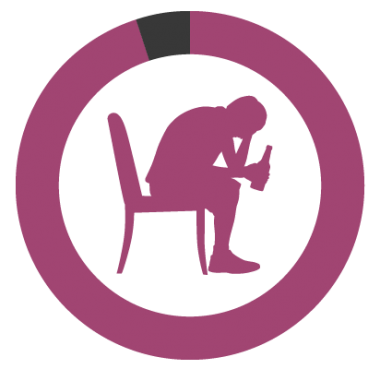 It is commonly stated that the last person to notice that he or she is struggling with drug or alcohol addiction is the addict. Long before the addict becomes aware of the existence of a substance abuse problem, friends and family members have often already detected it and seen its negative effects.
It is commonly stated that the last person to notice that he or she is struggling with drug or alcohol addiction is the addict. Long before the addict becomes aware of the existence of a substance abuse problem, friends and family members have often already detected it and seen its negative effects.
One study found that 95 percent of substance abusers do not realize they have a problem.1 The purpose of an intervention is to make the addict realize that he or she has a problem and then make the decision to enter into our Florida detox programs on their own and continue treatment.
An addiction intervention can range from making a simple suggestion with an honest conversation to a formal intervention gathering where all participants detail how they’ve noticed substance abuse impact the addict.
If a person waits too long to get help, an intervention can come in the form of a legal mandate from a drug court as an alternative to prison. Unfortunately, the criminal justice system continues to be the largest referrer of patients to substance abuse treatment in the nation.2 In this case, the motivation to intervene is mostly about the public good, which will always be improved when an individual’s wellbeing has improved.
Direct, Indirect and Forcible Interventions
In general, all types of addiction interventions will fall under one of three categories: direct, indirect and forcible. The intervention success rate can vary depending on the types.
A direct intervention is the most popular type of intervention and involves family members, friends, and other loved ones confronting the addict and laying out a plan of treatment. In this style of intervention, the addict has little say about anything other than whether he or she will agree to treatment. The location and course of treatment are already predetermined by the intervention participants, as are the consequences should the addict not agree to receive help. This intervention success rate for this style is most effective for addicts who appear unlikely to take the first step in seeking substance abuse treatment.
An indirect intervention focuses on the addict’s family and environment. In some unfortunate cases, the family and friends of the addict realize there is a problem, but the addict refuses to accept treatment. An indirect intervention provides guidance for those closest to the addict to make his or her environment more conducive to healing.
Forcible interventions occur as a result of an addict’s civil liberties being suspended. This normally comes in the form of a court or doctor ordered mandate. This is usually the last resort because it is preferred that a person give consent prior to any sort of medical treatment or procedure. This type of intervention is usually only for cases where the addict appears to be a danger to himself or those around him, or when substance abuse is exacerbating a preexisting serious psychological condition.
Some Specific Types of Addiction Interventions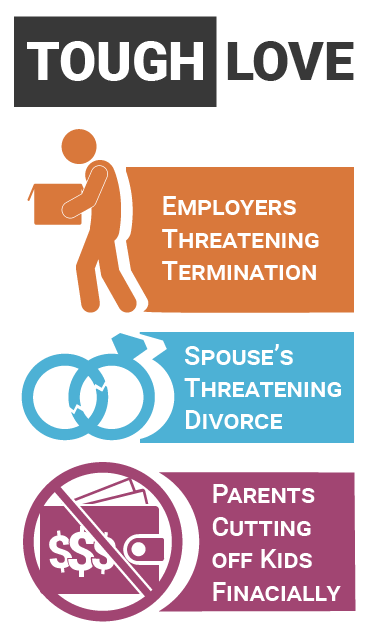
- Johnson Institute Model: This type of intervention evolved from the confrontational, blame-associated strategies primarily utilized until the late 1990s. Instead of focusing on vilifying the addict, the Johnson model focuses on educating the addict’s caretakers on how to confront the addict and convince him or her to seek help.3
- ARISE Intervention: This involves a combination of both direct and indirect intervening and focuses on the entire family since addiction is a disease that impacts the whole family unit. In ARISE, both the addict and their family members are encouraged to seek addiction treatment and education such as our addiction family programs in South Florida. One study found that the ARISE strategy led to 83 percent of addicts agreeing to receive treatment.4
- Crisis Intervention: While this may begin as a direct intervention, it can quickly become a forcible one. Crisis interventions are held to prevent some life crisis from occurring as a result of substance abuse. This may be required if an individual is neglecting parental duties or putting him/herself in danger as a result of constant abuse.
- Tough Love: This strategy should be viewed as a last resort because it not only involves making threats to the addict if he does not receive treatment, but it also involves following through.5 This includes parents cutting off financial support to children, spouses threatening divorce, employers threatening termination and a host of other potential consequences.
So Do Interventions Work For Addicts?
This very simple question does not have simple answers. This is because defining success is difficult and often subjective. Is the goal for the individual to agree to seek treatment? Is the objective for him or her to complete treatment? Is sustained sobriety the primary aim; and if so, what quantity of time qualifies as “sustained?” The very arbitrary nature by which one family or addict defines success versus another makes answering the question of whether addiction interventions work and the intervention success rates are very inexact.
On one hand, there is strong evidence that correlates familial involvement in addiction treatment to successful outcomes.6 We know that an intervention without the guidance of one of our licensed Florida professional interventionists can potentially strain the relationship between an addict and his or her family. He or she may feel betrayed, hurt, ambushed and/or angry – likely derailing the intervention effort and potentially alienating the addict from the family.
While an addiction intervention conducted by friends and family can be helpful in getting an addict to receive treatment, the intervention itself is not a factor in the eventual outcome of the rehabilitation.7
What Research Says About Intervention Success Rates
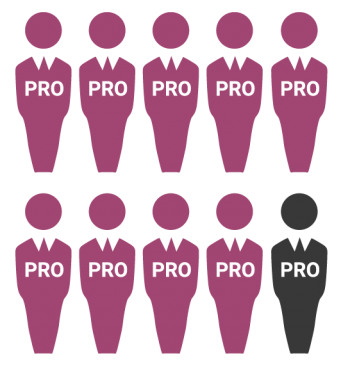
It is widely believed by much of the medical community and the addiction recovery industry that interventions make an addict more likely to seek help, and chances of success improve when working with a professional interventionist.
The National Council on Alcoholism and Drug Dependence (NCADD) reports a higher than 90 percent success rate of interventions involving a trained professional result in the addict agreeing to seek treatment.8
It is important to remember that no two addicts are alike, no two groups of interveners are alike, and each addiction comes with differing levels of severity, depending on the type of substance(s) being abused and the length of time addiction has had to set in. These factors and others make it virtually impossible to isolate all potential variables to achieve a true qualitative result on the addiction intervention success rate. These numbers will also vary depending on the source.
The television show “Intervention” embraced the direct intervention approach and boasted a very impressive 71 percent success rate (meaning percentage of clients who remained sober following treatment) as of 2010. It’s worth noting that the success rates have declined as more time has passed because patients began relapsing. In 2013, the success rate fell to 64.2 percent; in 2015, it dropped to 55.9 percent. However, this success rate is still highly impressive when compared against the rest of the industry.
The Impact of Voluntary Addiction Treatment vs. Involuntary
One of the most commonly perpetuated falsities in the addiction rehabilitation industry is the notion that an addict who is involuntarily admitted into rehab cannot and will not benefit from the ensuing addiction treatment. While the statement seems intuitively correct, research and real-life application have debunked this claim.
In general, coerced addiction treatment is the result of one of the following:
- Child Custody Conditions
- Criminal Justice
- Child Protective Services
- Civil Commitment Programs
- Drug Court Supervision
- Parole
- Probation
Intervention success rates aside, a 2005 study published in the American Journal of Drug and Alcohol Abuse compared the treatment outcomes of methamphetamine addicts who were forced into rehabilitation against those who voluntarily sought treatment. The research determined that there was no statistical difference in the results.10
One study in particular, “The Effectiveness of Coerced Treatment for Drug-Abusing Offenders” contends that “legally referred clients do as well or better than voluntary clients in and out of treatment.”11 The researchers for this article found several examples of addicts actually doing better in treatment following an involuntary admission. This is largely due to the threat of legal consequences for a failure to submit to treatment, which does not apply in all interventions.
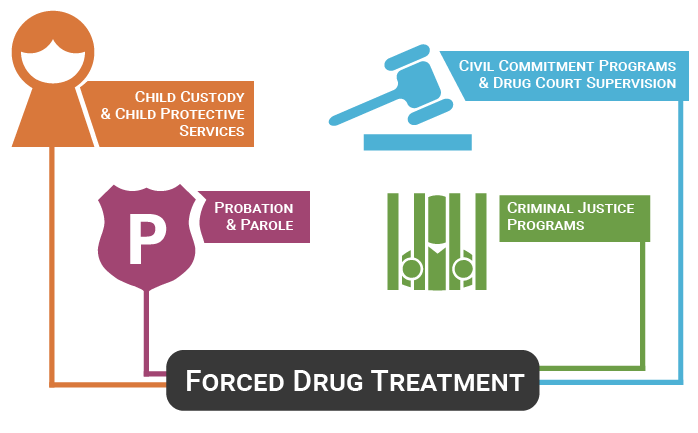
Drug courts are diversionary addiction treatment programs used in place of incarceration for eligible individuals. They have been proven to decrease crime, save money and reduce drug abuse among the people in their programs.12
Based on these findings and many others, you can conclude that the way in which a person enters addiction treatment bears little impact on the final result. The most important thing for individuals with substance abuse problems is to get the help they need. Once an individual is in rehab, his or her level of success will ultimately depend on several different factors, the least of which will be whether the treatment was voluntary or involuntary.
Discussion and Recommendations
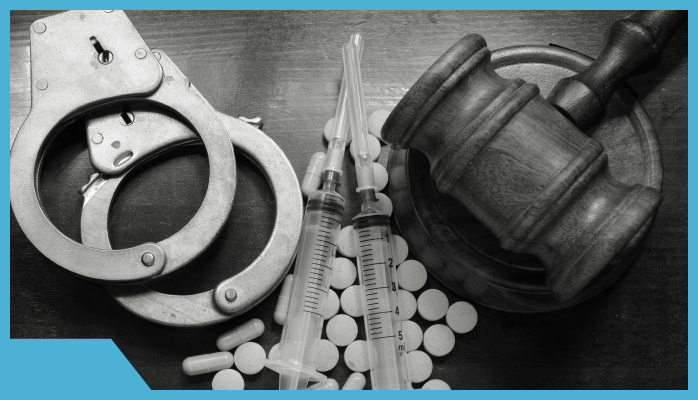
An addict’s friends or family members can often find themselves feeling as powerless as bystanders watching an impending car wreck.
The drug intervention success rate depends on many different factors, but professional intervention is a highly recommended and successful way of getting someone you care for to recognize his or her addiction, the damage it is causing, and then make the decision to get help.
There are no guarantees of success when it comes to drug addiction and alcoholism rehab, but there are several steps you can take to help improve your loved one’s chances:
- Don’t Wait for Rock Bottom: Too often, those closest to the addict wait too long before stepping in and saying something. Interventions like these are often the result of some catastrophic event and thus become reactive instead of proactive. The earlier you can identify the problem and take action, the better the chances for a successful recovery.13
- Focus on Solutions, Not Problems: As we’ve observed on television, interventions can often take on combative tones. This is the opposite of what you want. You don’t want to put the addict on the defensive. Instead, you want to show that your concern is based on love and care for their wellbeing. You do this by remaining positive and politely refuting any excuses the addict makes for not wanting treatment.
- Realize Your Role: Few addictions are allowed to go on without the help of some enabling factors. Whether it is providing funds or transportation, freely abusing substances around the addict, allowing a mental disorder to go untreated, creating an atmosphere which may trigger the addict to abuse or anything else, each family member or friend can likely identify ways in which they have contributed to or enabled addiction.
- Be Prepared to Stick to Consequences: One of the more difficult things for family members and friends involved in an intervention is to consistently enforce laid out consequences for the addict refusing treatment. Failing to stick to consequences only serves to enable the addict to keep abusing drugs or alcohol. The consequences are put in place to make addiction treatment seem like the best option.
- Get a Professional: As stated earlier, intervention success rates can be high and interventions are often effective at getting an addict to accept addiction treatment when a trained professional is involved. If you’re like most people, your only experience with an addiction intervention came from watching a movie or television show. An interventionist will guide you and your family through every step of the process, instruct you on what to say and how to say it and will maintain order as the one impartial voice in the intervention.
Sources:
- ODPHP – Substance Abuse
Overview(Active Tab) - Drug War Facts – Treatment for Substance Use Disorders
- American Psychological Association – Johnson Intervention
- NCBI – Outcomes with the ARISE approach to engaging reluctant drug- and alcohol-dependent individuals in treatment.
- ABC News – Parents Face Difficult Decisions When Dealing With a Drug-Addicted Child
- NCBI – Family member involvement in relapse prevention improves alcohol dependence outcomes: a prospective study at an addiction treatment facility in India
- Psychology Today – Drug and Alcohol Interventions: Do They Work?
- NCADD – Intervention Tips & Guidelines
- Reality Blurred – Intervention’s success rate is high, but has dropped
- The Medical Dictionary – Coerced treatment for methamphetamine abuse: differential patient characteristics and outcomes
- NCJRS – The Effectiveness of Coerced Treatment for Drug Abusing Offenders
- NADCP – National Association of Drug Court Professionals
- Medscape – Alcoholism Clinical Presentation


